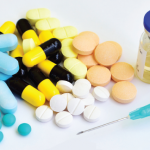“How can you detect if a patient has latent tuberculosis infection? It turns out that it isn’t so easy,” said Dr. Ampel. Diagnostic tests include the Mantoux tuberculin skin test and testing blood for the release of interferon gamma. The Mantoux test is not easy to place correctly to achieve a meaningful result, as the prick may be too shallow, Dr. Ampel said. “It’s not the erythema that matters, it’s the induration,” he added. Induration of five or more millimeters indicates a positive result in some at-risk patients, including HIV-positive patients, those taking more than 15 mg of prednisone a day for more than a month, or those taking anti-TNFα drugs, he said. Skin tests of patients who have had the Bacillus Calmette-Guerin (BCG) vaccine may be hard to read, and it is best to ignore that history when interpreting the test.
Interferon gamma blood tests don’t require patients to return to the office to gather results, and there are no BCG or skin placement issues. However, results may vary widely, and the test is not useful in children five years of age or younger, he added.
Patients taking anti-TNFα therapies who develop latent TB may exhibit symptoms like persistent fever, weight loss, and cough. In these cases, chest radiographs, complete blood count, or CT scans may help confirm diagnosis, Dr. Ampel said. In a patient with suspected active tuberculosis, first establish diagnosis, then halt anti-TNF therapy, then start treating the TB, he said. If rheumatoid arthritis flares at some point, rheumatologists may wish to restart BRMs and watch the patient carefully.
Be aware that other, nontuberculosis mycobacteria may also cause infection in these patients, Dr. Ampel added. “Non-TB mycobacteria live in the environment, and we are exposed to them all the time.”
Environments with Increased Risk
Inhalation of mold spores also can lead to pulmonary fungal infection, and the risk is increased in high-nitrogen organic environments like farms, animal coops, and old buildings. If a patient presents with persistent fever, mucosal ulcers, and weight loss, especially if they’ve lived or worked in such an environment, they should be assessed for suspected histoplasmosis, he said. However, cultures can take weeks to grow to confirm diagnosis. Detection of antigens in the urine or blood serum may be helpful, particularly in disseminated cases. Coccidiodomycosis occurs in about 150,000 patients in the U.S. yearly and is endemic in parts of California and Arizona. Serology and chest radiograph are useful in diagnosis, Dr. Ampel said. Antifungal medications like itraconozale and fluconazole are used to effectively treat these infections, but treatment is prolonged, often taking as long as a year or more.


